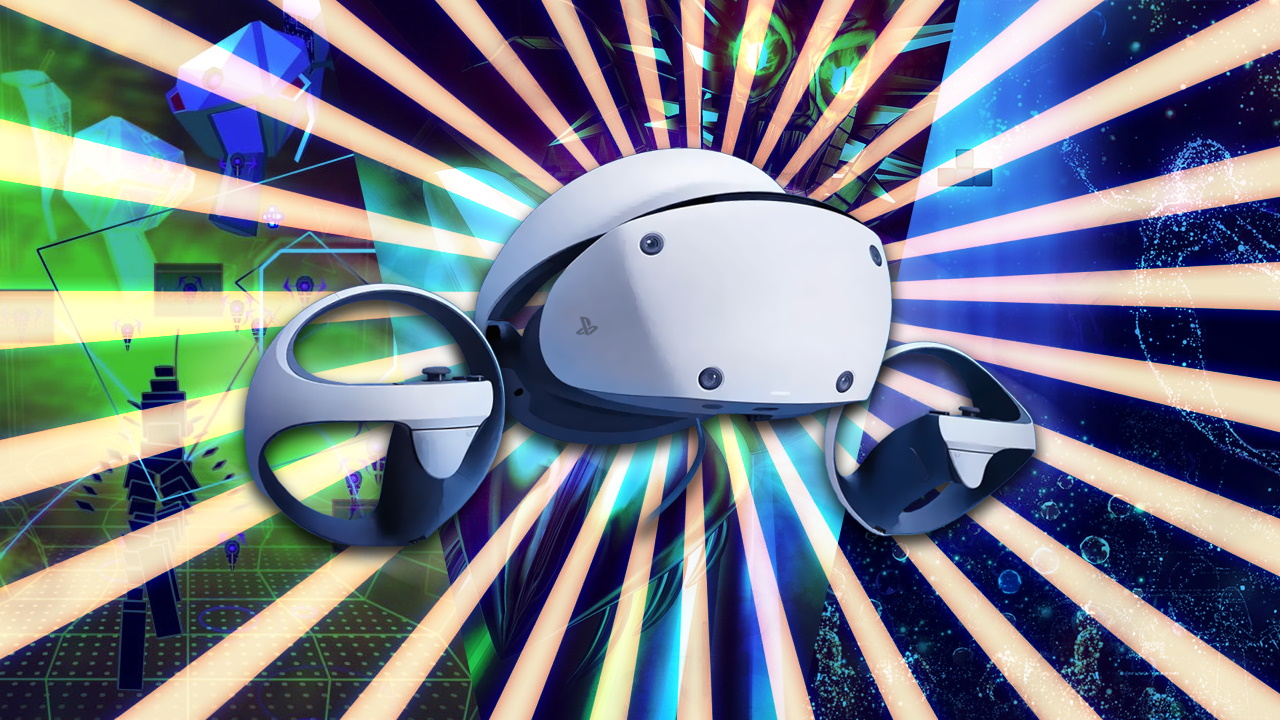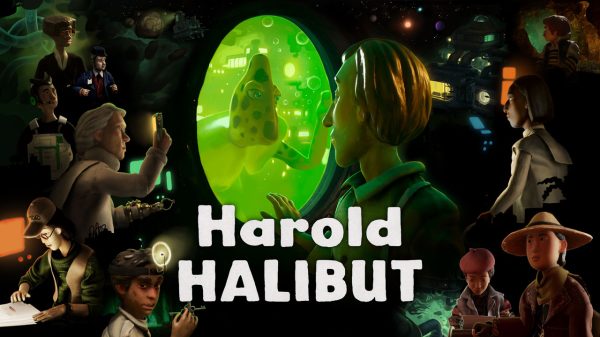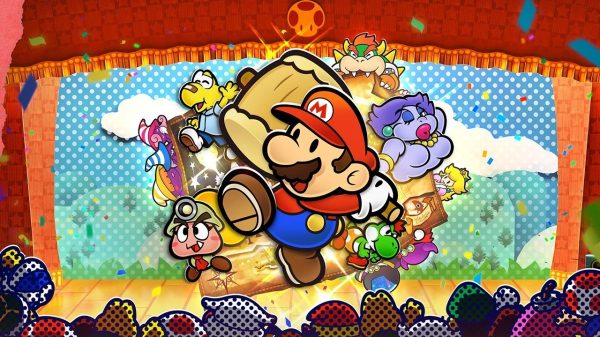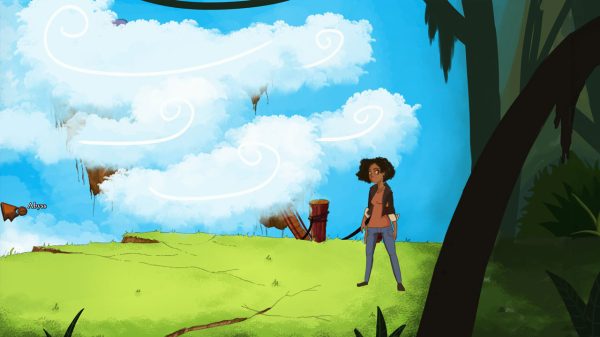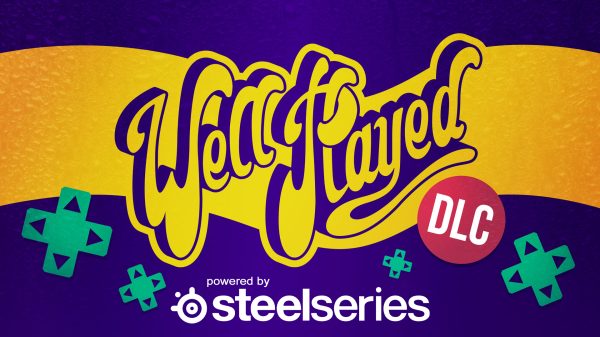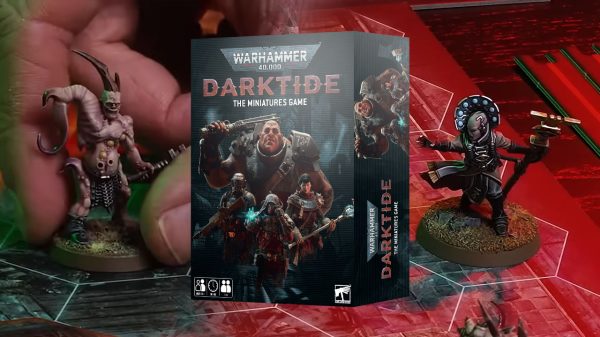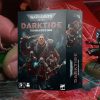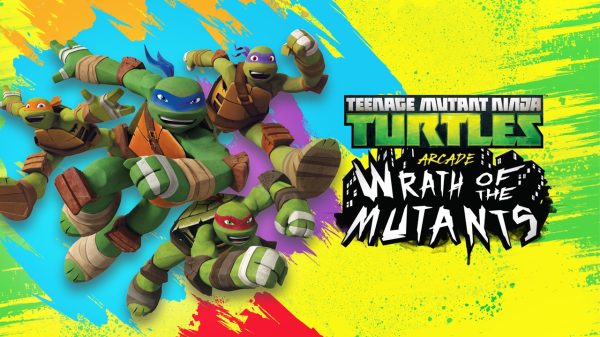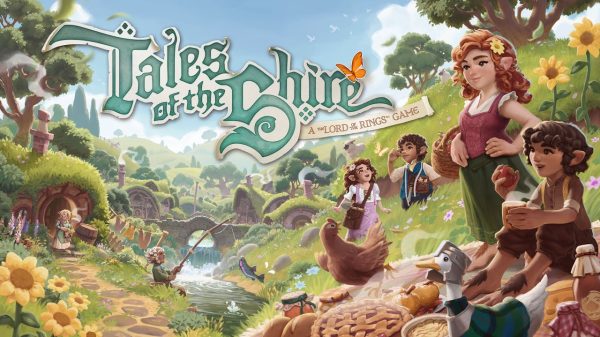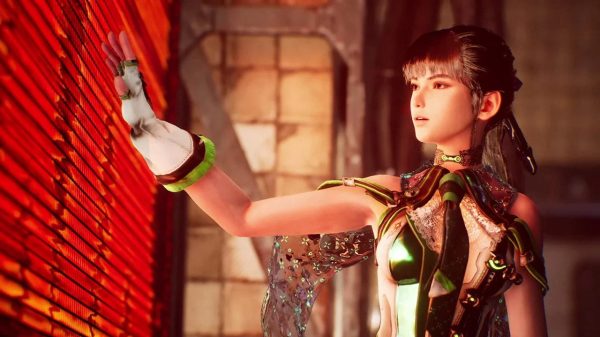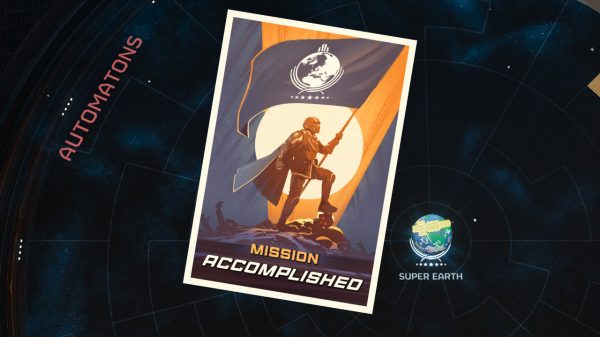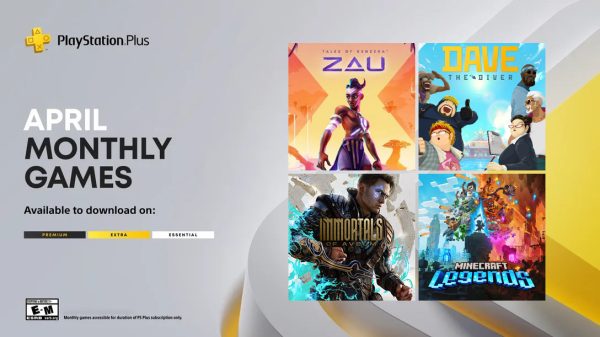PlayStation VR 2 (PSVR2) has finally arrived and as our resident (evil) PSVR expert, I was anxious to dive into as many experiences as possible to see how far Sony has come since the original PlayStation VR (PSVR1). While there are undoubtedly new titles that really showcase the hardware like Horizon: Call of the Mountain, most of the day one games are updated classic VR titles already available on PSVR1 and other VR platforms. However, having access to so many of these PSVR1 titles placed me in a unique position to experience these upgrades and updates through that lens. While we do plan to cover some of the marquee titles for the system, I wanted to focus this piece on taking a look at these updated games I have wrapped my eyeballs around, and gone through what enhancements PSVR2 brings to the table, how much they improve the experience and if any of these upgrades are worth your money. So strap on your headsets and let’s dive in.
Rez Infinite
Developer: Enhance Games | Publisher: Enhance Games
Paid Upgrade
Let’s begin by covering a launch title for the original PlayStation VR – Rez Infinite. This was Enhance’s first foray into VR and was one of the only universally acclaimed titles for the system at launch. Reimagining the cult classic in a three-dimensional space changed how people viewed the game. It has since come to almost every other VR platform and I was relieved to discover it was also coming to PSVR2. Having gone back to this gem to play a few traditional levels and have another playthrough of the stellar Area X, I can report it feels as magical as the first time, with a few new bells and whistles to sweeten the deal even further.
PSVR2 does add a number of improvements. Firstly, the 4K screen gives the game a crisper image than the quality on display on PSVR1, although the game’s simplistic art style never exactly suffered from many issues visually. However, the upgrade to an HDR screen combined with the OLED panel produces gorgeous rich and vibrant colours that are planted in your mind when you close your eyes.
In addition to the obvious benefit of the improved controllers, Rez Infinite was one of the only launch titles outside of Horizon: Call of the Mountain to implement eye-tracking. While there are many control methods and playstyles to play Rez Infinite, eye-tracking aiming may be one of the most effortless and coolest way to play, where you simply hold down the X button and look at the targets with your eyes and watch them explode in a spray of fireworks. This can all be done without moving your head. If you’ve never tried Rez Infinite or even the original Rez, then this is a must-play. Owners of the game on PlayStation 4 can take advantage of an upgrade path for a small price to play it on PSVR2. Some players may already have the PlayStation 4 version if they claimed it during Sony’s Stay at Home promotion in 2021.
Tetris Effect: Connected
Developer: Enhance Games | Publisher: Enhance Games
Paid Upgrade
While we are talking about Enhance, we would be remiss to neglect their follow-up masterpiece, Tetris Effect. Released in 2018, Tetris Effect is the classic you know and love but in VR. While that sounds boring on paper, take a second to think about the synergy of audio, visuals and gameplay to create a mental getaway for those looking to sit back and let the hours melt away. I loved it when I reviewed it on PS4 and gave it a 9.5, with my only criticism of the game at the time being its lack of multiplayer mode. Luckily enough, multiplayer was added to the Connected edition of the game when it released for other platforms. PSVR1 owners were left out of this update, but they finally have the opportunity to experience the full Tetris Effect experience on PSVR2.
In a similar fashion to Rez Infinite, most of the benefits of this title stem from the switch to a higher resolution and the HDR OLED screen. The game uses high contrast and saturated colours that really pop with Sony’s shiny new headset. Also like Rez Infinite, owners of Tetris Effect on PS4/PSVR1 can upgrade to the PS5/PSVR2 for a price.
No Man’s Sky
Developer: Hello Games | Publisher: Hello Games
Free Update for Ps5 Owners
No Man’s Sky is the game that keeps on giving. Finally bringing VR to the space exploration hit in 2019 showed a lot of promise but needed work, with low resolution and heavy pop-in among the issues at launch for PSVR1. However, what it did offer VR players was bring a world with hours upon hours of content, giving you the freedom to do whatever you want. It’s a safe bet to have the game available for PSVR2’s launch, but that’s not to say it’s perfect. While the game is definitely sharper than its PSVR1 counterpart, it isn’t as crisp as I expected it. Given that running the PSVR1 version on a PS5 reduces some of the earlier criticisms with resolution and asset loading, I guess I was hoping for a little more from a native PS5 version. There are definitely examples of games on PSVR2 that make the case for No Man’s Sky looking better than it currently does.
However, I shouldn’t be complaining too much as the Sense controllers are a significant improvement over the Move controllers (which were surprisingly solid for the time), and a natural fit for the gameplay that provides a variety of activities to last several months (or even an infinite amount of time I guess) and is playable solo or in multiplayer. And just like every other content update offered by Hello Games, the PSVR2 update is free for any owner of the game, creating a beefy game for launch day.
Moss and Moss: Book II
Developer: Polyarc| Publisher: Polyarc
No Upgrade Path
I decided to include these two games as a single entry because you really should be experiencing them together. Moss and Moss Book II represent a single consistent story that continuously builds on the ideas they introduce through both games.
It is no secret that I love the games and what Polyarc has done with the franchise and that world, giving the second a 9.5 in my review with the only drawbacks noted being smaller technical issues and the limits imposed by the original PSVR1 hardware. The PSVR2 versions of both Moss games address both these issues and create a more polished experience while enhancing what is already there.
Firstly, the introduction of Sense controllers means the player character has two inputs for interactivity. Having both hands ‘locked’ to a single DualShock 4 controller meant that you could only interact with so many things at once. With the sense controllers, you can interact with multiple parts of the environment simultaneously whilst controlling the game’s hero Quill using the controller sticks. Add the adaptive triggers and haptic feedback in the headset, and interactions suddenly feel a lot more tactile and immersive, and the move to inside-out tracking means solving puzzles feels completely seamless.
Speaking of seamless, a huge unexpected upgrade over the PSVR1 version is the load screens. In Moss and Moss Book II, the screens fades to black making a page flip sound as Quill moves from each environmental scenario, which effectively became load screens that lasted a few seconds each. On their own it’s not too long, but when you’re constantly navigating between rooms and spaces you begin to see more black screens than the game. In the PSVR2 versions however, these fades do not last longer than a second, which not only more accurately represents flipping pages of the book, but makes the gameplay a more pleasant experience with little downtime.
Finally, the power of the PS5 allowed Polyarc to boost the image quality significantly, with more detailed foliage, higher quality assets, and improvements to lighting and textures bringing the world to life. On top of that, the HDR OLED screen produces rich colours, which in my eyes makes Moss and Moss Book II two of the most beautiful games in VR.
The only drawback to this praise is that there are no options to upgrade to these versions for owners of the original games, so anyone wanting to play these on PSVR2 will need to fork out $X. As a huge fan of the original games, I had no personal problem laying down the cash, but I can understand the hesitancy to double dip. You can get both games in a bundle at a discount rate, so if you have not played them yet I highly recommend playing through the whole experience together.
Thumper
Developer: Drool| Publisher: Drool
Paid Upgrade
Thumper, along with Rez Infinite, was present for the PSVR1 launch and started the non-stop wave of excellent rhythm games that has led to their (rightful) domination of the VR space. Thumper is simple in premise but brutal in its challenge. Those who have played it describe it as a violent rhythm game and this certainly feels apt.
Its psychedelic levels, intense percussion, high speed and monstrous difficulty create a rush that is exhilarating just as much as it is daunting. While the game is also playable on a flat screen, nothing compares to the thrill of this game in VR. Truth be told, the PSVR2 update doesn’t add much, but it didn’t really need to either. Its simple controls allowed players to enjoy it using any controller and its simplistic yet effective art direction meant it looked great even on the original PSVR1.
Nevertheless, I can never say no to the best version of a game even if it’s not a night and day difference. Subtle additions like the use of haptics are effective and the headset feedback in particular is incredibly satisfying when you hit an orb back at the boss during the frantic levels. Furthermore, the HDR OLED screen brings out a deep colour palette and creates a very clean image that never falters throughout the whole experience. Like Rez and Tetris Effect, if you owned the game on PS4 you can upgrade to the PS5/PSVR2 version for a small fee, and if you claimed this one during 2021’s Play at Home program then you may already be eligible for the upgrade.
Gran Turismo 7
Developer: Polyphony Digital| Publisher: Sony Interactive Entertainment
Free Update for PS5 Owners
Gran Turismo 7 was never on PSVR1, but the Gran Turismo franchise does have a troubled history with it. Before the headset even launched in 2016, it was announced that Gran Turismo Sport would be making its way to the headset. No details had been given, but at the time many (incorrectly) assumed it would be the full experience. Fast forward to the launch of PSVR1 where Gran Turismo Sport was delayed a full year. When the game finally did arrive, the VR compatibility was limited to 1v1 races against an AI. Sony quickly slipped in Driveclub VR at launch to fill the void, but it was ultimately disappointing that such a large PlayStation staple on its way to VR ended up nothing more than a missed opportunity.
Out of nowhere, shortly before the launch of PSVR2 Sony announces that 2022 hit Gran Turismo 7 would be available at launch, filling a rather sparse lineup of day one titles at the time. Naturally, this was met with scepticism, but that scepticism soon subsided when more details came out about it. The fact that this was indeed the full Gran Turismo 7 experience with a minimal compromise for VR was recompense for Gran Turismo’s past crimes on the platform, and people who try it are almost immediately evangelised by the experience. I am happy to report that I too have been evangelised, and this is as someone who does not really care for racers, let alone Gran Turismo.
GT7 in VR is almost deceptive and unassuming. When you load up the game in VR you are greeted with the menu as a flat screen. However, as soon as you initiate a race the screen suddenly wraps around you and you’re in the driver’s seat and it is transformative. The sense of presence in the headset and the detail in the cars creates a surreal experience that made me excited about Gran Turismo for the first time since the original PlayStation.
While there are cutbacks in visual settings such as resolution, foliage detail, reflections that run at half the framerate and sparser track environments, it is still extremely good looking all things considered. Driveclub VR in comparison looked like a PlayStation 2 game, whereas GT7 in VR looks very much like a modern title, and it is easily one of the best looking games in VR.
Importantly, while settings are toned down, all the features from the flat screen experience are present and VR enhances them in certain ways. For example, the combination of HDR and excellent lighting in the game creates very real sensations of driving in various conditions. For instance, when driving in the daylight I could feel the rays of the sun making my eyelids feel heavy as I attempted to focus on the road, while during night races the headlights of the racers behind me almost blinded me.
Driving in VR also has its own inherent benefits. Being in a 3D environment allows you to judge turns better, feel the verticality as the road rises, and look in your rearview mirrors to analyse how far and in what direction your opponents are coming up behind you. Time feels like it moves slower as you’re able to do many things simultaneously at any given time, giving your mind some space to focus on other things – it feels incredibly natural. Outside of races, you can also inspect cars in VR and watch replays which are neat additions but not the draw of the crowd.
It’s almost unbelievable how good GT7 is in VR. It looks fantastic for a VR game even next to its flat-screen counterpart, and VR implementation adds so much to the racing sim genre. Gran Turismo 7 is a high-quality polished AAA title with tons of content for solo and online play, and VR only enhances that. All of this, as a free update on launch day. Really good stuff.
Resident Evil Village VR
Developer: Capacom| Publisher: Capcom
Free DLC for PS5 Owners
Resident Evil 7 Biohazard was one of the biggest games to ever grace the PSVR headset. Sharing a strong connection with the device, the game itself started as a VR exclusive tech demo titled Kitchen This expanded into one of the most high-profile titles launching within the first few months of PSVR1’s life cycle. I remember playing a demo at EB EXPO 2016 in a haunted house-themed booth, and feeling profound unease as if I was in the Baker house. It arguably revolutionised horror by elevating and legitimising the experience within VR, while also giving the platform a fully-fledged AAA experience.
It sounded like a no-brainer then that its sequel Resident Evil Village would follow in those footsteps. While it already launched as a console game in 2021, many were wondering where the PSVR1 version was. Little did we know it was in fact in development for the hardware’s sequel.
The VR implementation of Village makes some significant improvements over its predecessor. Firstly, the game supports the Sense controllers, whereas the previous title only had head-tracked aiming, forcing players to use a DualShock 4. With Village, Capcom has rebuilt the game around the Sense controllers, allowing for a lot more realistic and immersive reactions. You can physically pick up items and ammo, you draw your knife from its sheath by physically grasping it from your sleeve, and then thrust to attack with it. Most importantly, you can utilise your weapons in more accurate and fun ways by physically aiming down sights.
Another improvement is in cutscenes. With Resident Evil 7, if there were cutscenes where control was taken away from the player, the game would revert to a virtual flat screen until you were in control again. Village boldly keeps you in more of the action more of the time. For example, there is a scene in the first hour of the game where you get dragged by the legs into the floor. Due to motion sickness concerns in other VR games, the game would revert to flatscreen until the character stands up. For most of my playtime in Village, I was physically being dragged by my leg and pulled through a floor without motion sickness. It was a terrifying moment that I believe would have been reduced if they just played that segment on a flat virtual screen.
Outside of that, there are more obvious things to be impressed about. The visual fidelity is through the roof. There are minor blemishes like a lower resolution, but outside of that slight lack of clarity, I found it difficult to discern the differences between the image quality of the flat screen PS5 version and the VR mode. Whether you’re putting your nose up against the home décor and inspecting its detail or standing on a cliff looking at the village in front of you with the castle looming in the background, this title provides some of the most impressive and atmospheric moments in a AAA VR game. The HDR is also put to good use, where blacks are truly pitch black, and even when there is nothing in the shadows I hesitated to move due to the fact I couldn’t pierce the darkness with my eyes and verify nothing was going to dismember me.
I don’t have to go on about the quality of the game itself, especially when Kieran already gave it a 9 in his excellent review which you should absolutely read. However, what I wanted to highlight is that the VR implementation enhances the experience and more than justifies another playthrough, while also giving PSVR2 early adopters a bona fide AAA horror classic. It stands alongside and in my opinion even exceeds its predecessor, and is one of the best VR experiences you can have. The VR mode is offered as free DLC you will need to download it from the PlayStation store if you own the PS5 version of the game.
The Verdict
That’s a lot of great games, but PSVR2’s lack of backwards compatibility means Sony has its work cut out building a library for its device. Even though the titles I have listed here are playable elsewhere, the enhancements that PSVR2 provides justify jumping in and experiencing them for the first time, or going back and re-experiencing them. When you take a look through the above titles, PSVR2 already has half of the best experiences from PSVR1 that play and look considerably better, with more on the way. Creed: Rise to Glory – Championship Edition, Walking Dead: Saints and Sinners, Firewall Ultra and Beat Saber are all upgraded versions of PSVR1 favourites that we cannot wait to check out in PSVR2. Based on my first week with the headset and revisiting all these games in a fresh light, I can say that I could never go back to the older versions of these games. It also goes without saying that, by comparison, PSVR2’s launch has provided a much stronger lineup than PSVR1’s in terms of quantity and quality. Here’s hoping Sony keeps this good feeling going.
Mr Multiplatform just wants everyone to get along. Occasionally he gets called a Sony fanboy but then he spams haters with photos of his Halo, Gears of War, Super Mario and Zelda statues. When he is not gaming he is in legal courts thinking about video games or recording music thinking about games




